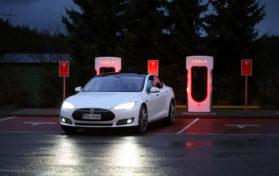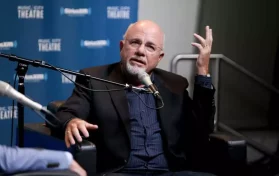
At the beginning of December 2021, the cost of a barrel of oil was just over $65 per barrel, currently, it’s upwards of $130. In the past year, gas prices have risen by more than a dollar, and although wages are up, consumers are still getting quite a wallop in the wallet when it comes to purchasing fuel for the daily commute. However, there are some ways you can save on fuel, you simply need to use a creative approach to purchasing fuel.
There are several factors that affect the savings you can get when purchasing gas. Not only does where you buy gas matter, but the condition of your vehicle as well as the way you drive can have an influence on fuel savings. Plus, the way you pay for fuel is a factor that affects how you can save on gas. Let’s take a look at some innovative ways to save a few pennies at the pump. Over the course of a year, you could save a few hundred dollars.
Saving Gas with Apps and How You Pay
1. Use apps to find the cheapest gas.
Whether you live in a small town or a larger city, it is not uncommon to see gas advertised at one price in one area while stores just a couple of miles away offer gas three, five, or even ten cents cheaper. At one time, the only way a person might know that Store B offered cheaper gas than Store A was to physically drive by each store.
But now, there’s an app for that.
There are multiple websites and apps specifically designed to tell consumers various gas prices in a certain area, such as GasBuddy and Waze.
2. Shop for gas before your vehicle is near empty.
Drivers can still check the price of gas as they drive through town, but it’s never a good idea to scope out prices when the gas needle is inching ever so close to “E.” You’ll be more apt to stopping at the first opportunity to buy fuel, and you could end up paying more at the pump.
3. Prepare for gas-ups prior to going on a trip.
Use apps like GasBuddy to see where gas is cheapest along your route. While it’s tempting skip filling up at gas stations just off major highways. More often than not, these stores offer gas at a higher price than stores that are considered to be “out of the way” while traveling.
4. Don’t choose premium.
Unless your car’s manufacturer calls for premium octane, skip this higher-priced gas option. In most cases, the higher octane really has no benefit for vehicles, and you could end up spending twenty to forty cents more per gallon.
5. Join a fuel rewards program.
Multiple nationwide gas stations and grocery chains offer a fuel rewards program, and you can benefit from these fuel reward programs in multiple ways. However, because every fuel rewards program is different, be sure to read all the rules -specifically how much you have to spend before the rewards kick in – before signing up. Grocery chains, such as Kroger, require that customers spend a certain amount on groceries or fuel before drivers can get savings, so it’s important to know what fuel rewards programs offer the most savings.
GasBuddy, the app that lets drivers know where fuel is cheapest in an area, also offers its own fuel savings program titled Pay with GasBuddy. Drivers may join for free, and the program offers the ability to save up to twenty-five cents per gallon when drivers gas up at most national fuel store chains. Pay with GasBuddy also offers a paid version of the program in which members pay $9.99 per month in order to save up to forty cents per gallon. Drivers will also get 24-hour road assistance with the paid version.
Word to the wise – there are a few national fuel chains that do not accept the Pay with GasBuddy card, including Exxon Mobil, CostCo, Sam’s Club, and some Walmart gas stations.
6. Use a rewards credit card.
Some credit card companies offer a rewards credit card that offers cash back when you pay for gas using their card. With that said, be sure to read all the find print before opening a rewards credit card account. If you do choose to open a rewards or cash back credit card in order to buy gas, be sure to pay off the amount each month in full so you won’t rack up interest charges – which could wipe out your savings at the pump.
Click Here to apply for a credit card that gives you cash back on gas purchases.
7. Use cash to purchase gas instead of a card.
If you pay close attention, you may notice some signage for gas stations that read “cash price” or “card price.” What consumers may not realize is that several gas stations offer savings to customers who pay with cash rather than a card.
What stations are doing is passing on the cost of card processing fees to customers, so, if you pay with cash, you can avoid the extra few cents you’re charged when paying with plastic.
NOTE: Some gas stations will waive this fee if you’re using a debit card, but others won’t. You’ll have to ask the cashier about store policy.
8. Use free or discounted gift cards.
Some survey websites such as CashKarma or MyPoints will compensate survey participants with gift cards or cash. Drivers can use these gift cards to purchase gas.
Drivers should also be aware that there are discounted gift cards that consumers can buy from websites such as Raise and Gift Card Granny.
9. If you must fill up, make sure it’s before Wednesday.
A 2019 GasBuddy study shows that gas prices tend to be lowest on Mondays and Tuesdays. Conversely, gas prices are highest on Friday, Saturday, and Sunday of each week, so avoid fill-ups on those days if possible.
Saving Fuel by Improving the Way You Drive
No one really wants to talk about how their driving habits affect fuel economy, but, they way you drive can save you – or cost you – over the long run.
10. Carpool if possible.
Organizing a carpool is a great way to save money on gas, particularly if you live near other co-workers. However, carpooling is a great idea for parents who have children that share the same activities as their neighbors, too. If you can cut down on any driving, this can add up to savings over the long haul.
11. Always plan your route.
One way to save money on gas is to plan your regular trips ahead of time. If you know you’ll be grocery shopping, the consider the time of day as well as which day you’ll be running errands. Driving during high-traffic times means more stop-and-go driving, which can decrease your fuel economy.
Some creative ways to plan your trips include combining trips. If you normally shop for groceries near work, then plan to make a stop after work rather than waiting until your day off and making an extra trip to the area. Plan to run all errands on the same day rather than making multiple trips on multiple days.
You’d be surprised at the amount of miles you can cut down if you lump trips together, and the savings will build up over time.
You can also avoid a lot of stop and go traffic using a GPS system, which will highlight high traffic areas.
12. Reduce the time spent idling in traffic.
It’s tempting during cold winter days to go start the car and allow it to warm up before heading out, but these times when the car is idling for several minutes can waste a good bit of fuel.
13. Lift the heavy foot.
When driving through heavy traffic, sometimes drivers can’t avoid the need to step on the accelerator. However, if you are able to slowly accelerate when driving, you can increase your fuel economy. Take your foot off the gas a bit sooner when possible, and slowly glide your vehicle to a stop as traffic allows. “Coasting” actually helps to improve fuel economy, especially when making stops and turns.
14. Take advantage of cruise control – sometimes.
If you drive in areas with lots of hills, the next bit of advice might not be so advantageous for you, but, for driving on mostly flat areas, utilize your cruise control. The steady speed provided by cruise control assists in getting better fuel mileage. However, if you are driving in a hilly area, it may be best to forgo cruise and drive normally.
15. Cut down the heat and air conditioning.
It’s no secret that running the A/C will decrease fuel mileage, but some drivers may not know that blasting the heat has the same effect on fuel economy.
At the same time, it is still uncertain as to whether rolling down the windows is better for fuel economy than turning on the air conditioning. Most cars today are built to be more aerodynamic, but it is possible that wind drag could have a detrimental effect on your fuel economy as well. However, when driving at slower speeds, an open window beats the a/c when it comes to fuel economy. If you’re on the highway or interstate, then you’re better of turning on the air.
16. Lift that heavy foot, part II.
We’ve already discussed easing on the accelerator when possible, but, in overall driving, staying at or near the speed limit is proven to help preserve your fuel economy. In fact, if you drive a little below the speed limit, you can slightly increase fuel mileage.
Saving Fuel by Keeping your Vehicle in Good Condition
17. Check Tire Pressure Regularly
A great way to save on fuel is to know your car manufacturer’s recommended tire pressure, and keeping your tires at that pressure. Even a slightly under-inflated tire can wreak havoc on fuel economy. According to the U.S. Department of Energy, drivers may lose up to two cents per mile when driving on under-inflated tires.
No driver’s manual? Look on the sticker on the interior of your driver door. There should be the proper tire pressure listed there.
NOTE: Be sure to check tire pressure when there are big changes in the weather. Colder temps tend to shrink the amount of air in tires, while hot temps may cause the air in the tires to expand.
Click Here for great deals on a new tire gauge.
18. Check your gas cap.
The gas cap plays an important role in the fuel economy of your car. If the gas cap is left off, the gas in the tank could evaporate more quickly, robbing you of fuel economy. Even a bad seal on the cap can increase evaporation rates of fuel. Even if just the rubber seal seems damaged, go ahead and replace the cap for better fuel economy.
Click Here for great deals on a new gas cap.
19. Remove extra weight from the vehicle.
A trunk full of sports equipment, groceries, or even those multiple bags of clothes you’ve been meaning to donate can add extra weight to your vehicle. Remove any unnecessary weight from your trunk or from the cargo area of your vehicle for an increase in fuel mileage.
20. Take those racks off the roof of your vehicle.
Having a bike rack or a rack to hold other sporting equipment is a great amenity when you’re hauling those things regularly, but, if you aren’t using them often, you’re actually adding unnecessary weight to your vehicle – and wreaking havoc on your fuel economy.
Racks can add wind resistance to your vehicle as well, which can decrease fuel economy.
21. Make sure that you’re using the correct oil for your vehicle when getting oil changes.
We can’t stress enough how maintaining your vehicle properly can add to your fuel economy over the long run. While drivers are seeing that they don’t have to pull the car in for an oil change every 3,000 miles like we used to, it is still best to follow your car manufacturer’s recommended oil change guidelines. If the driver’s manual calls for an oil change every 5,000 miles, then try to stay on that schedule as much as possible.
It’s also imperative to use the type of oil that your vehicle’s car manufacturer recommends as well. The U.S. Department of Energy holds that drivers can lose up to six cents per mile if they aren’t using the right oil for their vehicle. If you can find the right grade of motor oil that also carries a label of “energy saving” or “energy conserving,” then you’re likely to get a boost there as well.
Most vehicles today call for synthetic oil. According to AutoGuide, synthetic oil decreases friction, which could improve fuel economy.
Click Here for great deals on Motor Oil.
22. If possible, trade the gas-guzzler for a more fuel efficient car.
If your current vehicle drinks a lot of gas, one way to save – particularly if you aren’t hauling lots of passengers on a regular basis – is to purchase a more fuel efficient car. Today, a hybrid car can offer a great deal of fuel savings. Electric cars are also an option.
Click here for great deals on a new car.
23. Seek a vehicle with a stick shift.
If you can find one, a manual transmission saves more fuel than an automatic transmission. However, some vehicle manufacturers offer this only as an option; most vehicles are standard equipped with an automatic transmission.
Click here for great deals on a new car.





